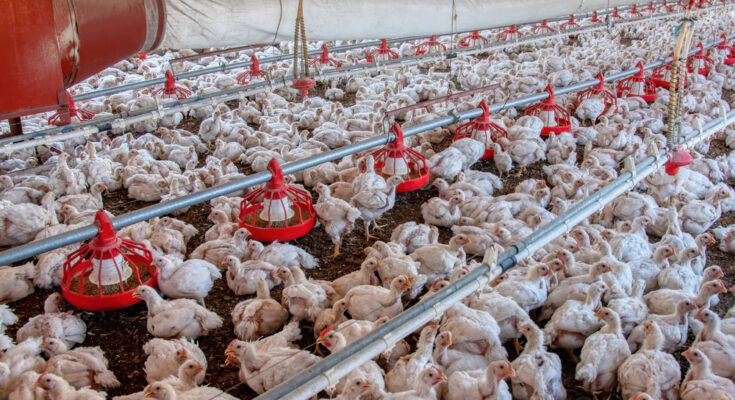An investigation carried out by the organizationessereanimali revealed an alarming fact: more than 90% of chicken breasts sold under the brands Conad, Coop and Esselunga showed signs of a muscle myopathy known as “white streak”. The phenomenon seen in the form of white streaks in the fat and fibrous tissue that makes the grooves of the meat is a direct consequence of the use of genetically selected breeds to accelerate growth. The analysis was carried out on 619 packs purchased at 48 points of sale in ten cities in Italy, paints a worrying picture both for animal welfare and for the quality of the final product that reaches consumers. However, this is not surprising: last year, a landmark investigation by essereanimali had reported the presence of “white streaks” in 90% of chicken breasts from 38 stores on the Lidl circuit.
The “white lines” described in the report are not a simple aesthetic defect, however a clear sign of a physiological imbalance affecting the chickenespecially fast-growing breeds such as the Ross, which are currently dominant in intensive farming. Their chest muscles, forced to develop in a very short time, exceed the capacity of the circulatory system to supply blood and oxygen. The result is damage to muscle fiberswhich is replaced by fat and collagen. These changes have a significant nutritional impact: “lipid content can increase by up to 224%, collagen can increase by 10%, while protein content can decrease by 9%”, we read in the report.
The data collected by byessereanimali – a foundation that has always been involved in the fight against intensive farming practices – is very clear. This phenomenon was found in 92.04% of CONAD branded products, 90.64% of Coop products, and even 96.40% of Esselunga samples.. This was not a mild case: more than half of the analyzed packages of Conad (52.43%) and Esselunga (50.93%) showed a “severe” degree of disease (scores 2 and 3 on a scale of 3). Cooperative products, which at first glance appear to have lower impact and severity, actually hide other important problems. In fact, more than half of the packaging has see-through surfaces or large labels that hinder visual inspection. By limiting the analysis to only opaque packages, the percentage of “white line” shoots reached 96.10%, with the highest incidence of serious forms (55.41%) among all brands examined. Packaging choices that the association says, “raise questions about transparency for consumers.”
This scenario, explains Being Animals, This is a direct consequence of a production system that prioritizes efficiency and low costs. In Italy, more than 500 million chickens, or more than 90% of the total chickens, are raised in intensive systems. Compared with fifty years ago, they reach slaughter weight four times faster (only 35-42 days). The answer to this “quality emergency” exists and is called the European Chicken Commitment (ECC), a set of criteria that, among other things, forces a transition to a slower growing breed. More than 300 companies in Europe, including Carrefour Italia, Cortilia and Eataly, have already signed up. However, despite public declarations regarding sustainability and animal welfare, Conad, Coop and Esselunga continue to fail to adopt concrete commitments in this direction.
Last year, an investigation into chicken breast animals sold on Lidl supermarket shelves caused a stir, and 90% of them were found to have “white streaks”. Total, More than 600 samples of chicken breast packaging were examined in dozens of Lidl stores in 11 cities in the country, from North to South. Although all the containers analyzed reported the presence of indications on the label such as “certified product”, “controlled supply chain”, “use of natural light”, “environmental enrichment to encourage natural behavior”, the results reveal how 9 out of 10 products have the characteristic white streaks of white linesparallel to the muscle fibers of the meat. However, more than half of the samples analyzed showed a high level of disease severity.



